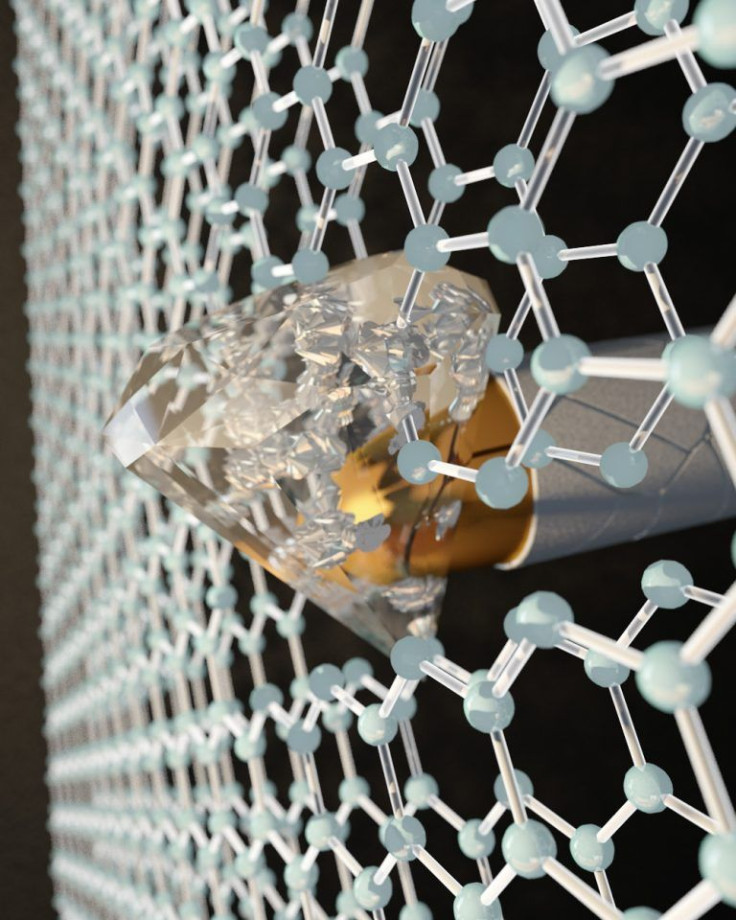Bulletproof Graphene: Paper-Thin Material Becomes Harder Than Diamonds On Impact

Graphene has revolutionized material science. This super-tight sheet of Carbon atoms is thinner than a sheet of paper but has some amazing physical properties, and researchers are trying to figure out all the possible applications of this highly versatile material.
Now they have come up with one that can save millions of lives.
A team of scientists at Advanced Science Research Centre at the City University of New York has created a bullet-proof suit material with graphene that becomes harder than diamond on impact from any fast moving or heavy object.
Researchers from the have layered sheets of graphene to create a material that has this unique property. The team used this to make a bullet-proof suit that becomes a diamond plate on your body when a bullet touches it, effectively making anyone who wears it as close to Superman as a normal man can get.
This material, thinner than Aluminum foil, has been named diamene. The material switches immediately on impact, making it a foolproof way to stop even the fastest, most powerful bullets immediately.
“This is the thinnest film with the stiffness and hardness of diamond ever created,” said Elisa Riedo, professor of physics at the ASRC and the project’s lead researcher in a press release on the ASRC website. “Previously, when we tested graphite or a single atomic layer of graphene, we would apply pressure and feel a very soft film. But when the graphite film was exactly two-layers thick, all of a sudden we realized that the material under pressure was becoming extremely hard and as stiff, or stiffer, than bulk diamond.”
During the research, the team also studied the interesting electrical properties of diamene in the lab. They found that the moment of conversion resulted in a sudden reduction of electric current traveling through the material, which led the team to believe that the material could exhibit unique electronic and spintronic properties.
The team made this material by using an atomistic computer to provide simulations of impact which helped them model potential outcomes when two honeycomb layered sheet of graphene is subjected to sudden and high pressure. They used an atomic force microscope to study sheets of graphene grown on plates of silicon carbide and what happens to it when pressure is applied.
Interestingly, they found that this graphite-diamond transition does not occur for structures which have more than two layers of graphene or just a single layer. The property is exhibited only when two sheets are used
“Graphite and diamonds are both made entirely of carbon, but the atoms are arranged differently in each material, giving them distinct properties such as hardness, flexibility and electrical conduction,” said Angelo Bongiorno, associate professor of chemistry at CUNY College of Staten Island and part of the research team.
“Our new technique allows us to manipulate graphite so that it can take on the beneficial properties of a diamond under specific conditions.”
The research team’s successful work opens up possibilities for investigating graphite-to-diamond phase transition in two-dimensional materials, according to the paper. Future research could explore methods for stabilizing the transition and allow for further applications for the resulting materials that are produced.
The possibilities of this seem endless. It can be used for protecting soldiers during war to solving several problems caused by high-velocity impact that could damage soft human tissue.
The study was published in journal, Nature Nonotechnology.
© Copyright IBTimes 2024. All rights reserved.





















